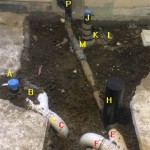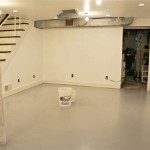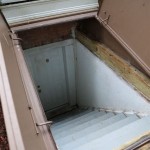Good Humidity Level In Basement
Maintaining a proper humidity level in the basement can be crucial for the longevity of your home and the comfort of occupants. While the ideal range for most basements is between 30% and 50%, excessive humidity can lead to several issues such as mold growth, wood rot, and increased energy costs.
Several factors can contribute to high humidity in the basement, including poor ventilation, moisture leaks, and condensation. Identifying and addressing these sources of moisture is essential to properly control humidity levels. Common measures include sealing leaks in plumbing or the foundation, installing a dehumidifier, and improving ventilation with fans or exhaust systems.
High humidity levels can pose various risks to the structural integrity of your home and the health of its occupants. Mold growth is a major concern, as it can cause respiratory problems and damage to building materials. Excessive moisture can also lead to wood rot, weakening wooden beams and joists, compromising the structural stability of the basement.
Maintaining optimal humidity levels not only protects your home but also enhances energy efficiency. Air conditioners work more efficiently in dry environments, leading to reduced energy consumption and lower utility bills. Moreover, controlled humidity levels contribute to a more comfortable living environment by preventing musty odors and condensation on cold surfaces.
To effectively manage humidity in the basement, consider implementing the following steps:
- Identify sources of moisture: Inspect the basement for any visible leaks or signs of moisture. Check plumbing fixtures, foundation walls, and windows for potential entry points.
- Seal leaks and improve ventilation: Seal any identified leaks promptly to prevent further moisture ingress. Install a dehumidifier to remove excess moisture from the air. If ventilation is inadequate, consider installing exhaust fans or improving natural ventilation by opening windows and vents.
- Monitor humidity levels: Utilize a hygrometer to monitor humidity levels and ensure they remain within the recommended range. This will help you track progress and make necessary adjustments to your moisture control measures.
Maintaining a proper humidity level in the basement is essential for preserving the integrity of your home and ensuring a healthy and comfortable living environment. By addressing sources of moisture, implementing proper ventilation, and monitoring humidity levels, you can effectively control humidity in the basement.

How To Achieve An Ideal Basement Humidity Of 30 50

How To Achieve An Ideal Basement Humidity Of 30 50

How To Achieve An Ideal Basement Humidity Of 30 50

How To Lower Your Basement S Humidity Level

What Is The Ideal Basement Humidity Level Epp Foundation Repair

5 Effective Tips To Reduce Humidity In Your Basement News And Events For Thrasher Foundation Repair

The Ideal Humidity Level For Your Basement Reliable Waterproofing

Relative Humidity Chart For Ideal In The House

What Should Humidity Be In A Crawl Space Nia

How To Achieve An Ideal Basement Humidity Of 30 50
See Also








